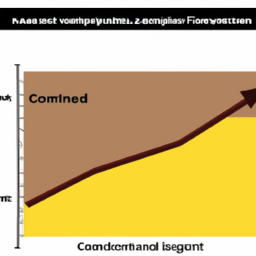Compound interest is a form of interest calculated using the principal amount of a deposit or loan plus previously accrued interest. This type of interest is different from simple interest, which does not take previous interest into account. Banks and lenders often use compound interest to calculate rates for loan payments and savings accounts. Understanding the basics of compound interest can help you calculate it and take advantage of its benefits.
The formula for compound interest takes the present value of money, then multiplies it by compound interest for each of the payment periods and factors in the number of payments made. This formula essentially multiplies three factors: your student loan's principal amount, the interest rate, and the number of payments that have already been made. Banks use this formula to calculate interest rates, and the same formula can be used to calculate the compound interest on a loan or savings account.
Banks often use compound interest to calculate bank rates. In essence, compound rates are calculated on the two key components of a loan or savings account—the principal and the interest rate. The principal is the original amount that was loaned or deposited into an account. The interest rate is the percentage of the principal amount that is paid in interest each month.
Also, some student loans may have compound interest— meaning the interest is compounded monthly, quarterly, or annually. This means that the interest due is based on the total amount of the loan, including the interest that has already been paid. To calculate compound interest in this case, you will need to use the same formula as for a bank loan or savings account.
The formula for calculating CAGR involves dividing the investment value at the end of the period by the investment value at the beginning of the period, then subtracting one and calculating the natural logarithm of the result. This formula can be used to calculate the compound annual growth rate (CAGR) of a loan or savings account.
Considering that compound interest is used to calculate returns on investments, it is important to take into account the effects of inflation when calculating the CAGR. By taking into account the effects of inflation, you can get a more accurate estimate of the return on your investment.
Moreover, if you are considering taking out a loan or opening a savings account, it is important to understand the implications of compound interest. For instance, loans with compound interest are often more expensive than loans with simple interest. This is because the interest rate is applied to the principal amount plus any interest that has been accrued.
It is also important to understand the implications of different payment periods when calculating compound interest. For instance, a loan with a 10-year repayment period may have a higher interest rate than a loan with a 5-year repayment period. This is because the interest rate is compounded over a longer period of time.
For those looking to save money, it is important to consider compound interest when deciding where to save. For instance, a savings account that earns compound interest may be more beneficial than one that does not. This is because the interest earned on the account is compounded, meaning that the more money you save, the more interest you will earn.
Finally, it is important to note that the formula for calculating compound interest can be complex and time consuming. To simplify the process, many banks provide online tools that can help you calculate compound interest. These tools can help you determine the total amount of interest you will accrue over a given period of time.
